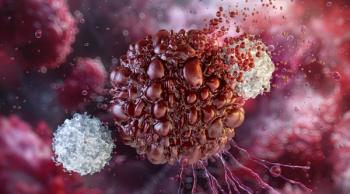
Adding ADT Fails to Improve Survival in Favorable Intermediate-Risk Prostate Cancer
The use of ADT along with modern dose-escalated RT does not improve survival vs RT alone in men with favorable intermediate-risk prostate cancer.
The use of androgen deprivation therapy (ADT) along with modern dose-escalated radiotherapy (RT) does not improve survival compared with RT alone in men with favorable intermediate-risk prostate cancer, according to results of a new study.
Trials have shown that adding ADT to RT improves survival in men with aggressive prostate cancer, but the use of ADT in intermediate-risk disease is more controversial. Importantly, the term “intermediate risk” involves a wide range of patients with varying prognoses. “It is now commonly accepted that a subset of patients with favorable intermediate-risk disease according to clinical characteristics have more favorable outcomes” than overall intermediate-risk patients studied in earlier trials, wrote study authors led by Ronald C. Chen, MD, MPH, of the University of North Carolina at Chapel Hill.
This study examined whether those favorable intermediate-risk patients actually benefit from ADT along with modern dose-escalated RT. It included 18,598 patients in the National Cancer Data Base. Intermediate risk was defined based on prostate-specific antigen (PSA) levels, biopsy Gleason scores, and clinical T stage based on National Comprehensive Cancer Network (NCCN) guidelines; favorable intermediate risk included patients with only one adverse risk factor (PSA level of 10–20 ng/mL or Gleason score of 7). The study’s results were
The concurrent use of ADT with RT in these patients declined over time; in 2004, 43.5% of patients received ADT concurrently with RT, compared with 39.5% in 2007 (P < .001). In an unadjusted analysis, the use of ADT was associated with a higher risk of death, with a hazard ratio (HR) of 1.09 (95% CI, 1.01–1.17; P = .029).
Propensity score–adjusted overall survival (OS) results showed the survival curves were superimposable for those who received RT alone and those who also received ADT. The 5-year survival rate was 89.6% with RT alone and 90.1% with ADT; at 8 years, these rates were 78.4% and 77.7%, respectively. “In no subgroup was there a significant difference in OS,” the authors wrote.
There was no significant association between receiving ADT and OS, with an HR of 0.99 (95% CI, 0.91–1.07; P = .768). The analysis did find associations between comorbidity score, age, and disease stage, and mortality. “This study is clinically relevant and directly informs a current area of significant controversy,” the authors concluded.
In an
Though men with unfavorable intermediate-risk disease should still receive concurrent ADT, Keane and D’Amico wrote that in unfavorable patients these new results show that “the addition of ADT to RT does not appear to improve outcomes, and it is therefore reasonable to consider treatment with dose-escalated RT alone.”
Newsletter
Stay up to date on recent advances in the multidisciplinary approach to cancer.
































































































